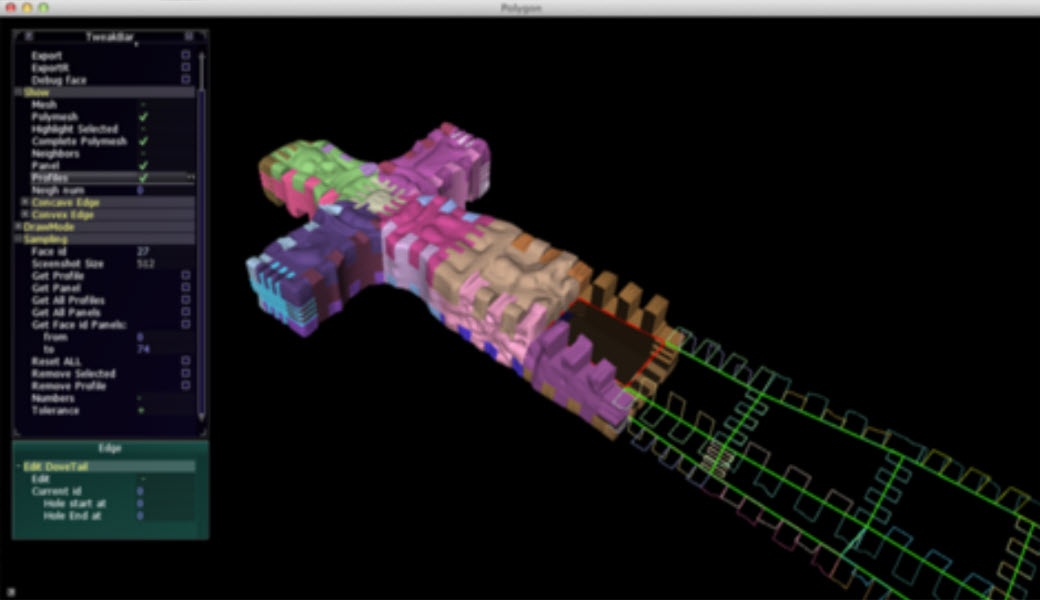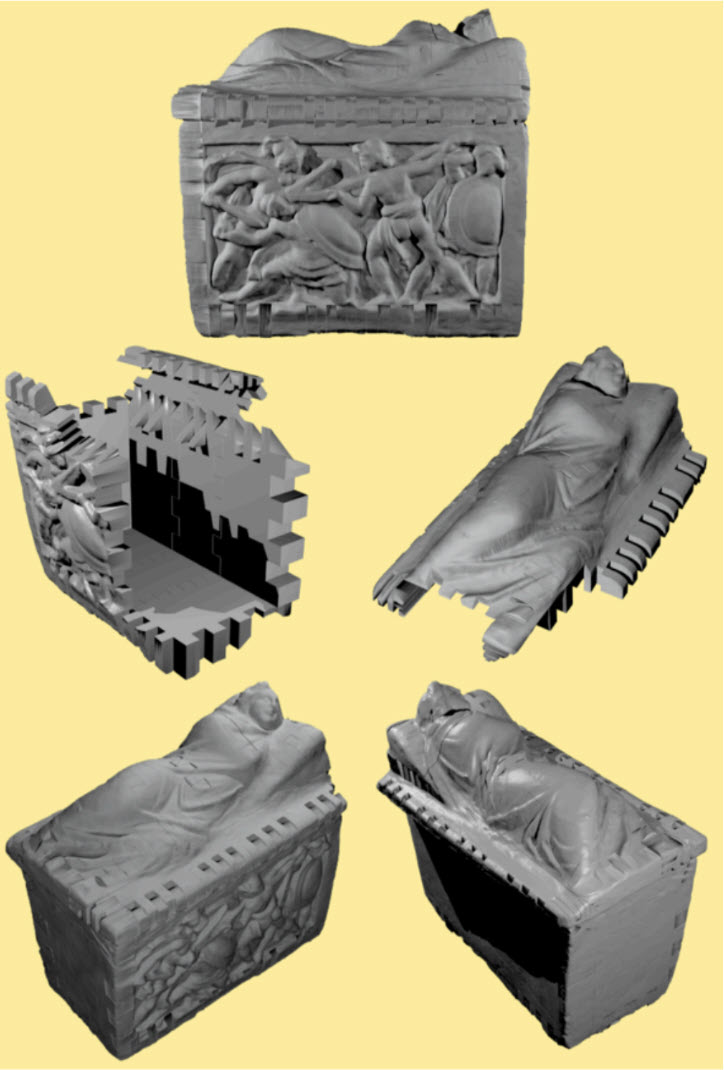Overview

Final thesis project for the Master’s Degree in Computer Science, developed in collaboration with CNR Pisa (National Research Council). The project led to a publication at EUROGRAPHICS Workshops on Graphics and Cultural Heritage (2014) titled: “Interlocking pieces for printing tangible Cultural Heritage replicas” (Paper Link ).
Project Duration and Skills
- Development Time: 14+ months
- Skills Acquired:
- OpenGL
- Advanced C++
- Triangular mesh operations
- VCGlib graphics library expertise
Implementation Details

The software was developed using VCGlib, a C++/OpenGL graphics library created by CNR’s Visual Computing Lab (VCG ) research team, which is also the foundation for MeshLab .
Project Objective
Create a software tool to decompose an input 3D model into multiple parts, rendered as 2.5D height fields with an interlocking mechanism that allows reassembly into the original complete model. This approach overcomes 3D printer limitations by enabling the creation of geometries that would be impossible to print as a single piece.
Technical Process
Initial Simplification:
- Creation of an approximated 3D geometry simplifying the input model
Model Division:
- Splitting the input model into parts following joint definition rules
- Implementation of interlocking mechanisms
2D Profile Generation:
- Creation of 2D profiles from the simplified geometry’s planes
- Sampling phase to reconstruct original model surface for each piece (depth map)
Final Processing:
- Triangulation to build geometric structures
- Creation of concave and convex interlocking elements
Tool Features
The final software allows specification of various parameters for mesh processing:
- Debugging options
- 2D sampling resolution control
- Mesh manipulation settings
Project Links
The complete thesis document, paper, and source code are available here:
- Documentation and Source: Thesis Project